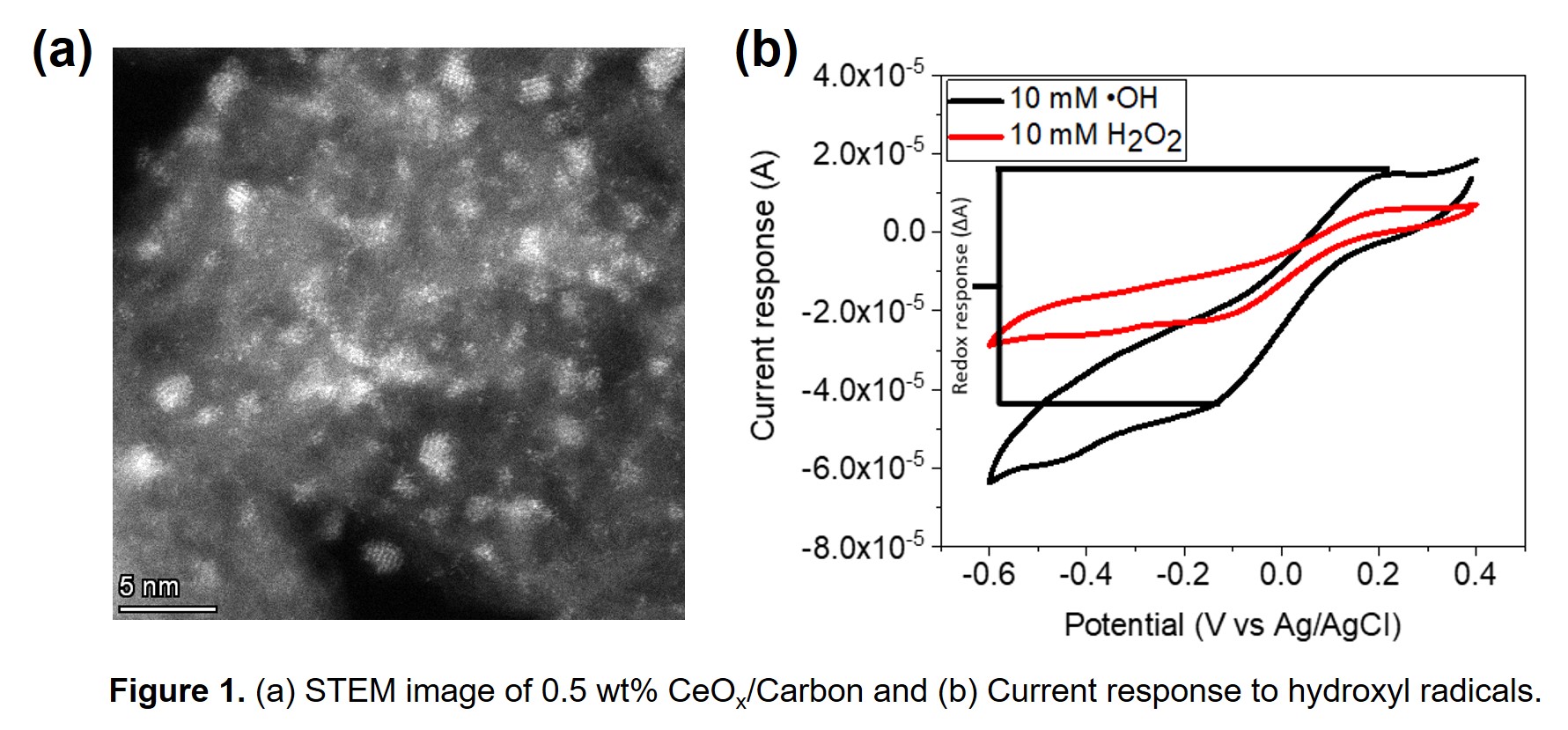2020 Virtual AIChE Annual Meeting
(459g) Super Sensitive Cerium Oxide-Based Composite Sensor for the Detection of Hydroxyl Radicals
Authors
Free radicals are recognized as essential molecules for upholding the function of normal cells. Immune systems, such as bacteria elimination and virus inactivation, are examples of the crucial role that free radicals play in human cells. Even though free radicals have benefits, an optimum production is key to maintain their advantages, as an excess can cause the development of oxidative stress conditions, such as cancer, Alzheimerâs, and Parkinsonâs diseases. Among all free radical species, hydroxyl radicals (â¢OH) are the most reactive and dangerous, and they can be used as biomarkers for the detection of those diseases at their initial stages. Thus, a very sensitive analytical sensor is needed to detect and monitor low concentrations of â¢OH. The integration of an electrochemical technique with a sensing element is regarded as a promising method for â¢OH detection due to a rapid and direct measurement without the pretreatment of samples. Thus, in this study, a glassy carbon electrode was modified with a sensing element comprised of ultrasmall cerium oxide nanoclusters (<2 nm) grafted onto a superconductive carbon (Figure 1a). XPS results showed 46.3% Ce3+ sites, which are those able to react with â¢OH. Cyclic voltammetry (CV) was implemented to characterize the interaction of the composite sensor with â¢OH, and they showed that the composite sensor was able to differentiate between solutions with and without â¢OH by an increased redox response in presence of â¢OH (Figure 1b). Furthermore, we observed a linear relationship between the redox response and the concentration of â¢OH in the range of 0.1 mM to 10 mM, with a limit of detection as low as 0.1 μM when using only 0.5 wt% CeOx loading.1
(1) A.C. Alba-Rubio, D.S. Kim, S. Duanghathaipornsuk; Super sensitive sensor for the detection of hydroxyl free radicals with scavenging properties. Application number 62/977,945 (2020).
